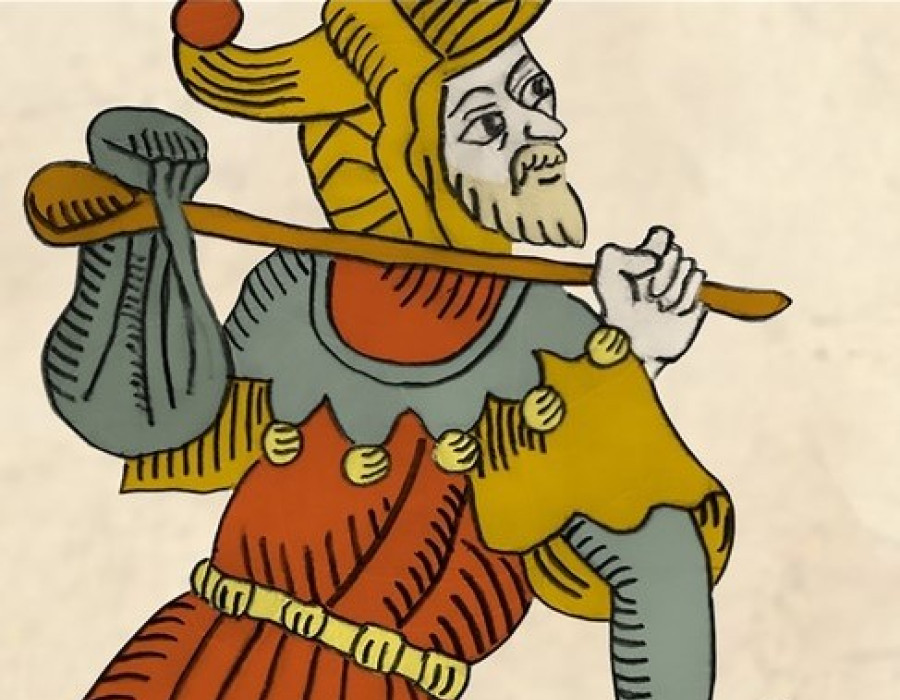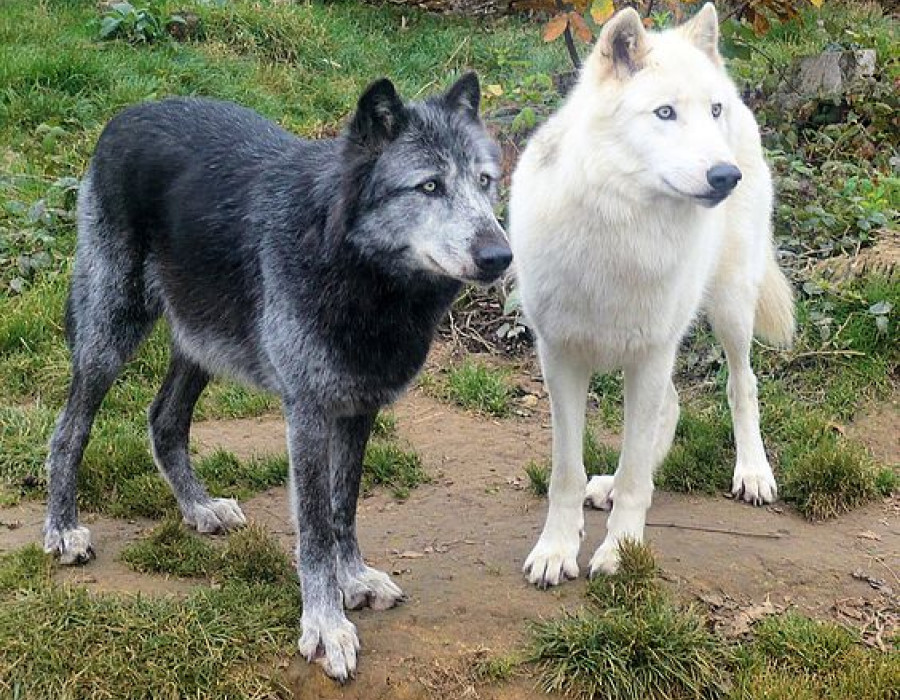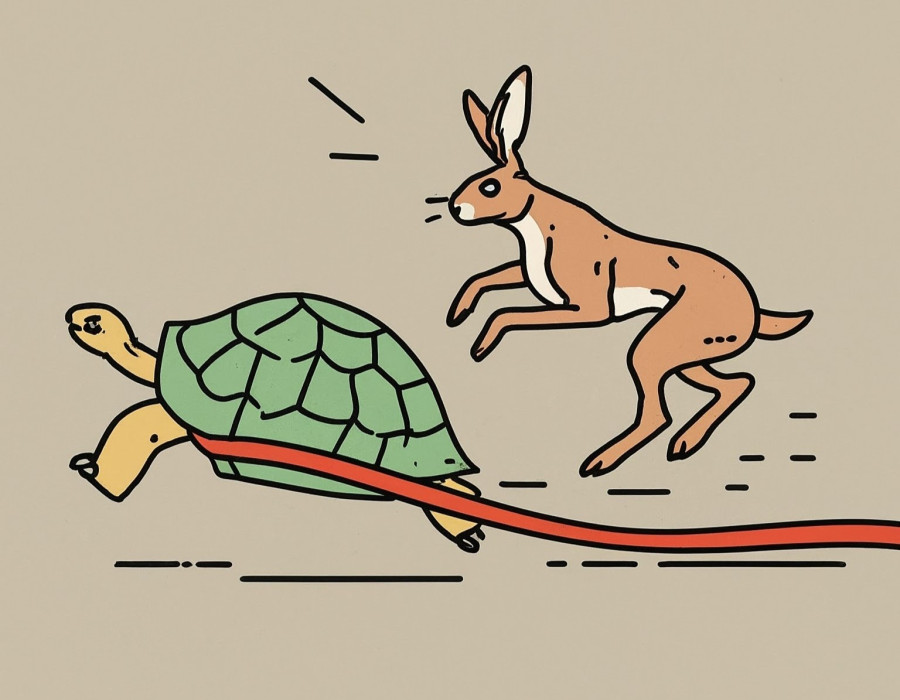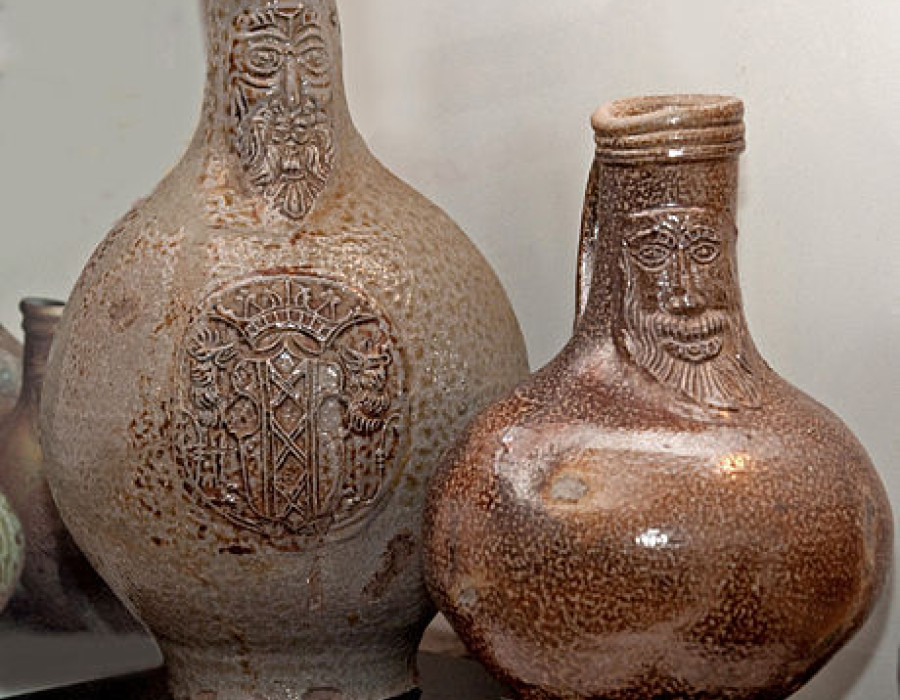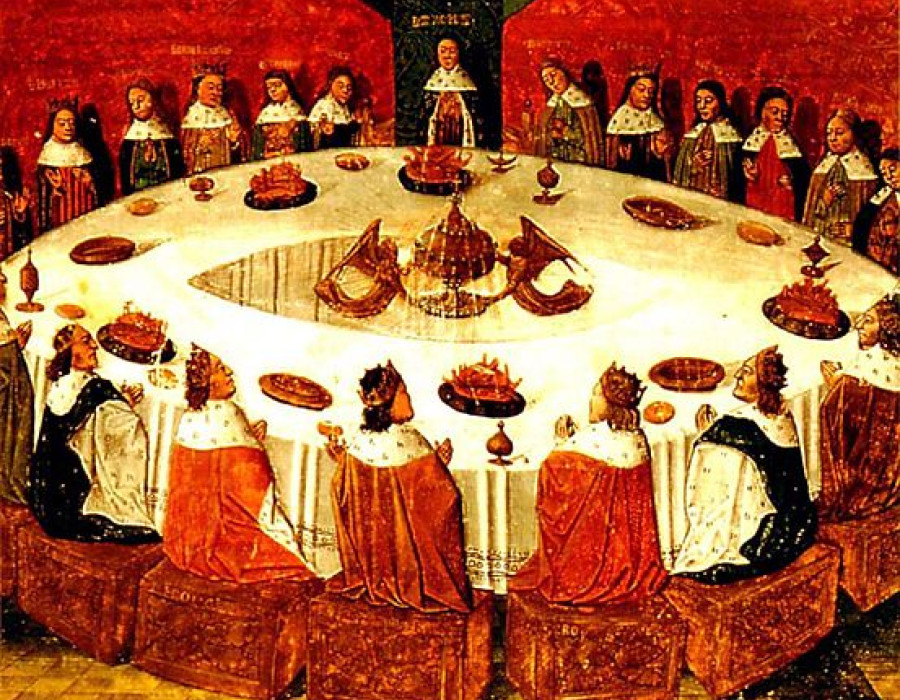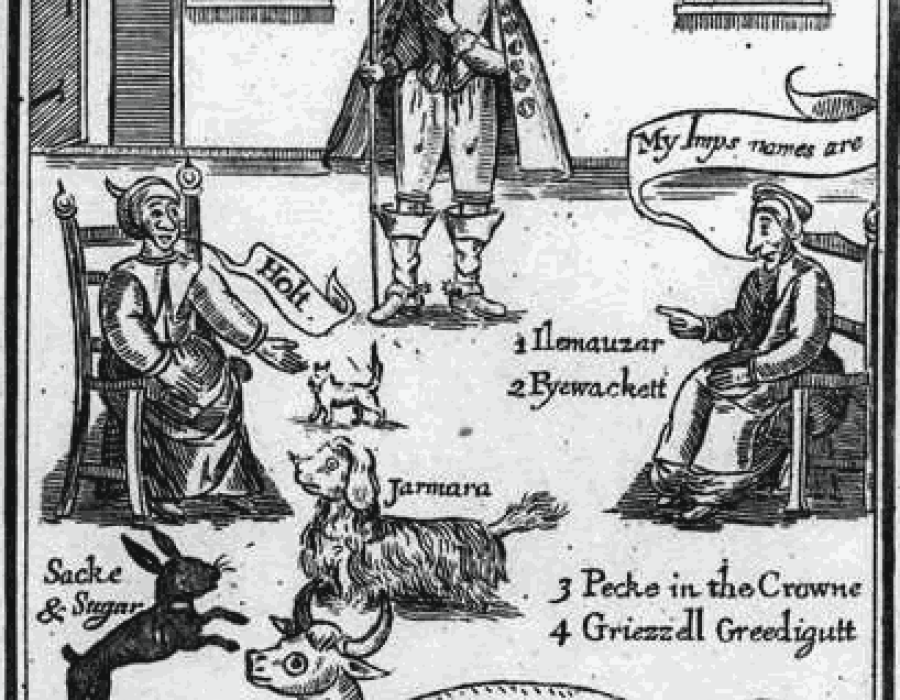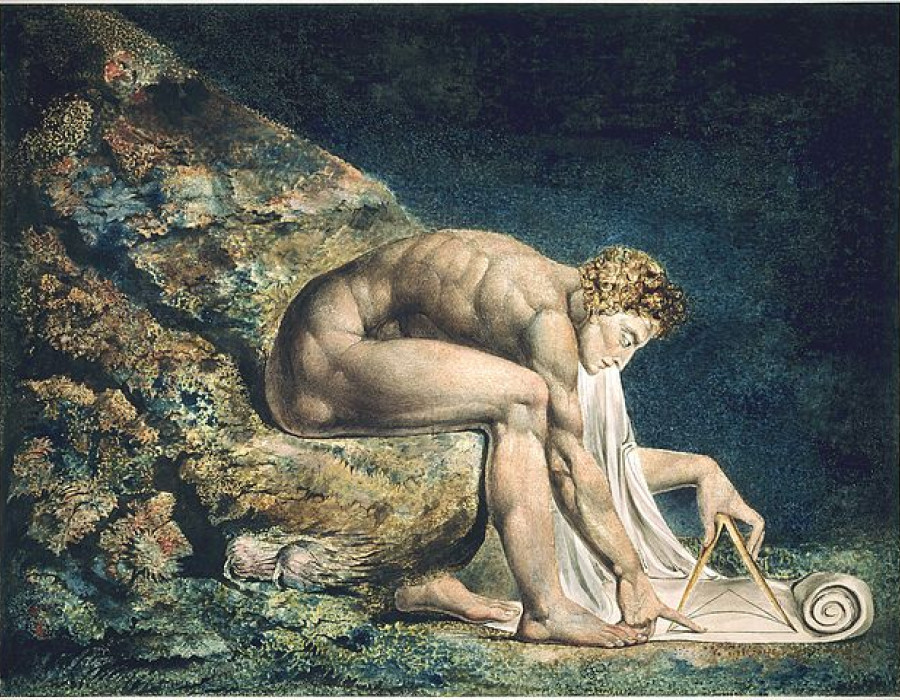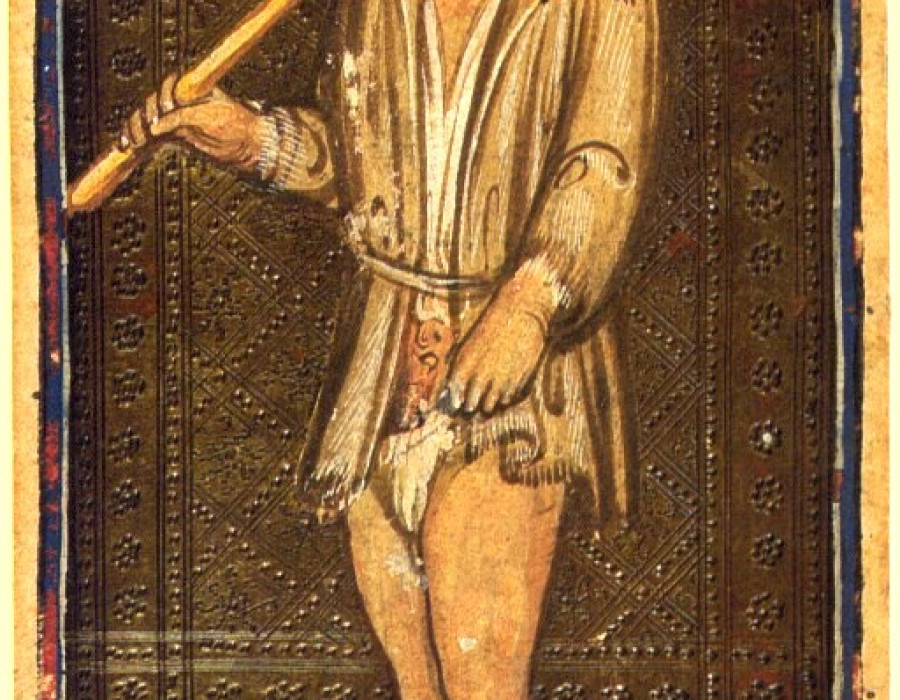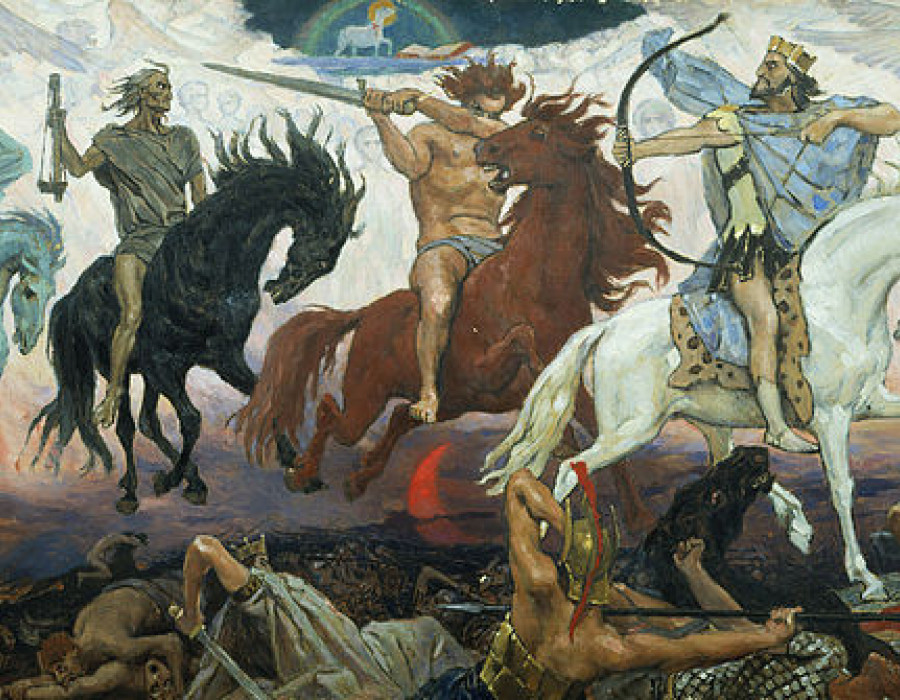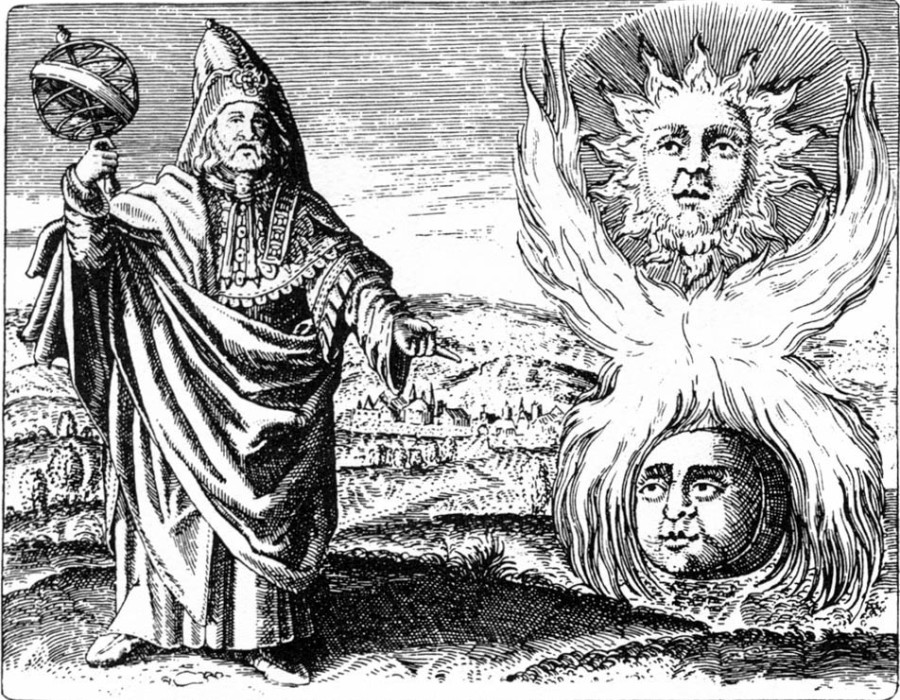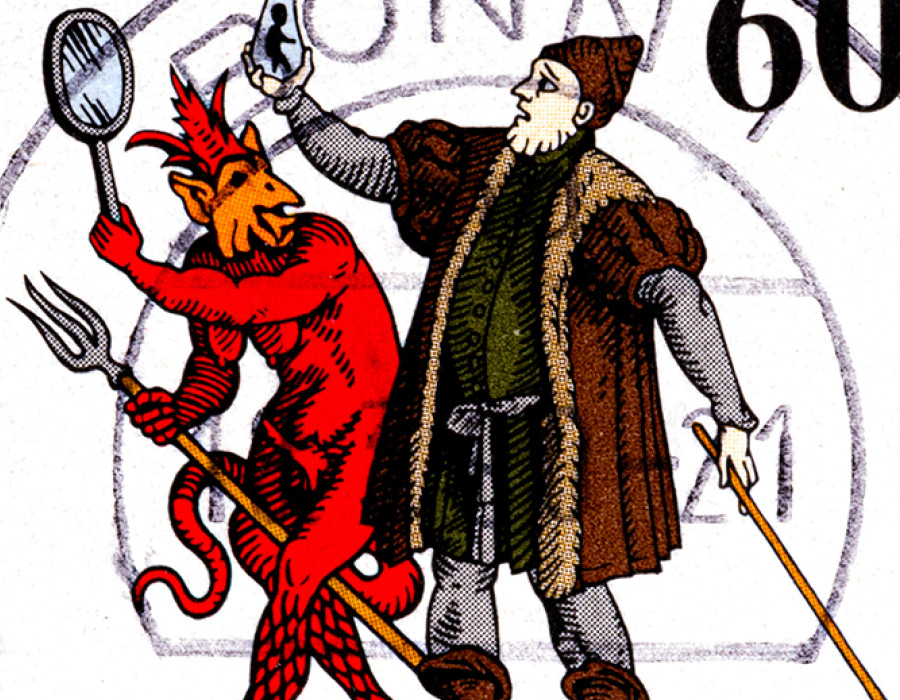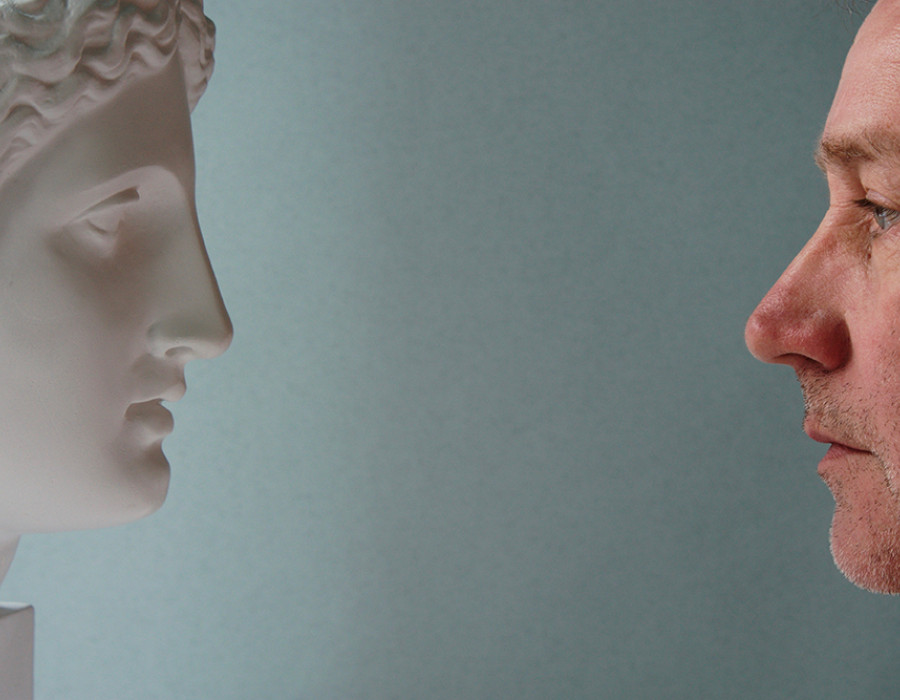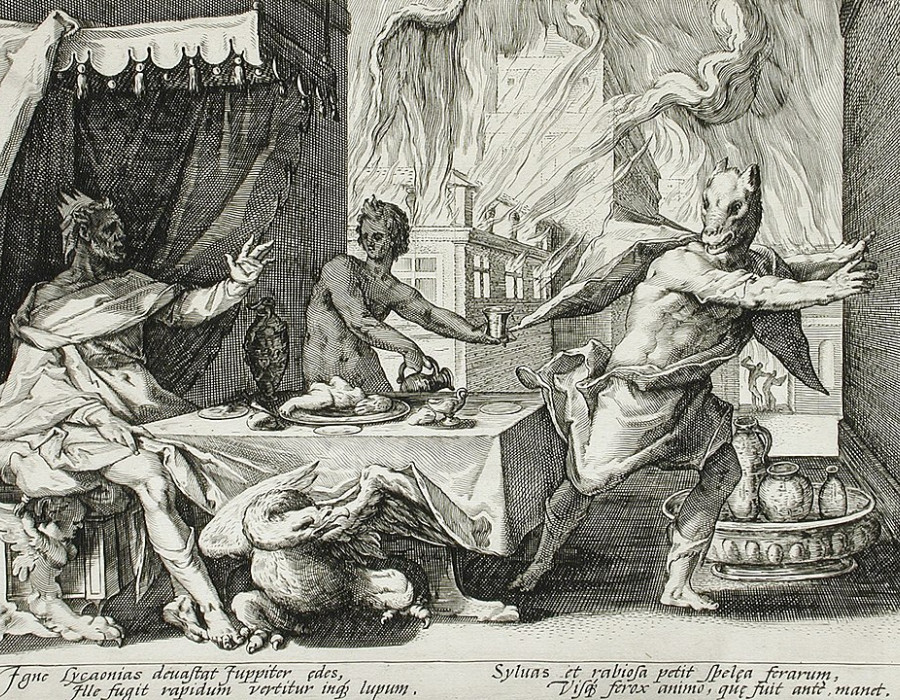
Martin Goodson
From Familiars to Zombies:
The Horror of Bodily Invasion in Folklore and Films
From the archive - The stronger the sense of a separate self, the greater the horror of bodily invasion.
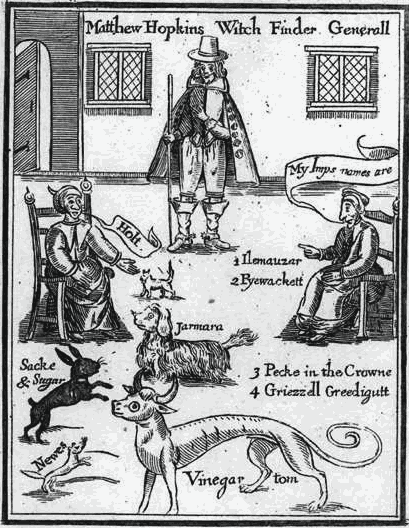
Frontispiece from Matthew Hopkins' The Discovery of Witches (1647)
The children’s playground is a hatchery of half-truths, where myths and legends play off uncertainties and fears in the childish imagination. I remember an earnest friend who had been told not to swallow apple pips, lest surgery be required to remove the resulting tree that was sure to grow inside him. Another story, also related to me with complete sincerity, told of the danger of sleeping on open ground: spiders and especially earwigs would crawl inside my ear and burrow into my brain.
Fear of bodily invasion by living organisms, and the attendant repugnance, go back a long way in folklore. However, as the examples above show, they are still used to ‘educate’ the young out of ‘bad’ habits. The American folklorist Harry Hyatt records incidental beliefs instilled in children that eating too much sugar, biting fingernails, eating raw hot dogs and consuming raw dough could all result in worms living in the stomach.
Living in close proximity to animals – as many people did in the past (e.g. with cows, pigs and chickens), and as many in our pet-owning culture do today – carries a real risk of ticks, fleas and other parasites jumping across onto human hosts. Transmission by insects of deadly and virulent diseases (such as the bubonic plague) can also occur. Although transmission routes were not well understood in bygone times, a certain ambivalence arose, inevitably, to living with animals. It could even extend to dogs, “man’s best friend”.
A common example of animals living off humans, in folklore, is the witch’s familiar. Dogs, ferrets, weasels, mice, toads, frogs, newts and – more traditionally – black cats could all be suspect: potential devilish helpers doing the nefarious bidding of a witch. Of course, these ‘familiars’ were not necessarily thought to live in the body (although there were reports that some could), but suckled instead by an additional teat endowed by the Devil on the body of the witch for this very purpose. A highly invasive inspection of a suspected witch would be carried out to locate this extra teat; quite often, a mole or even a freckle would suffice for proof, leading to a death sentence.
Bodily invasion is a popular trope in our own times, in films and on television. The horror of invasion is coupled with that of being possessed by a malignant and rapacious alien will. Zombie films are one reference point, e.g. 28 Days Later (2002), World War Z (2013, with a sequel in 2019) and the popular television series The Walking Dead. The zombie figure originates in Haitian Vodun, but the causative agent in recent popular culture has changed from sorcery to the biological sciences. Now, it is a pathogen – often manmade, for military purposes – that escapes and unleashes a post-apocalyptic world in which the few remaining humans must outwit and outrun mobs of cannibalistic zombies, which jump-scare the audience from every nook and cranny.
The work of the Canadian director, writer and producer David Cronenberg in the 1970s and 80s explores the horror of bodily invasion and parasitical entities. Movies such as Shivers (1975), Rabid (1977) and The Fly (1986) all play on the fear of becoming subjugated to blind instinctual drives, resulting in the dehumanisation of the infected victim. (As Cronenberg once pointed out, the predatory life forms depicted in these films are not evil. They just do what Nature intends them to do: feed and reproduce.)
Cronenberg’s 1979 movie The Brood sees him modify the formula somewhat. Instead of infection coming from without, it is psychological trauma that produces bodily mutation. A female patient in a mental institution, Nola, produces murderous dwarf-children from her own body as a result of repressed rage – the product of childhood trauma. These ‘children’ are then sent out to kill the human targets of Nola’s fury. This storyline brings us full circle with the witch’s familiar, whose task, it was believed, was to torture and kill its mistress’s enemies.
We mustn’t omit mention of the Devil as popularly portrayed: an animalistic humanoid with cloven hooves and a horned head, able – along with his demonic cohorts – to possess people or lead them astray. Even in our times, the image is still with us of each person having two natures, symbolised by an angel on one shoulder and a devil on the other – although our interpretation of this image is psychological.
In the Zen tradition, a similar symbolism occurs in the Ten Bull-Herding Pictures. The usual interpretation of the bull here is as the personification of the classic ‘Three Fires’ of greed, ill will and delusion, which the Buddha described in his Fire Sermon. We are already infected by the Three Fires, which are again personified at the centre of that classic Buddhist symbol, the Wheel of Life, as a cockerel (greed), snake (ill will) and boar (delusion).
The themes of invasion, of being taken over by an alien will, still apply; in this case, invasion is by the Unconscious, which can momentarily usurp conscious control: think of the ‘Freudian slip’ as one example of an unconscious complex rearing up suddenly. Mass movements are another: both Freud and Jung point to mass psychology as instances when individual autonomy is subsumed within the collective.
When practitioners come into contact with the ‘bull’ as a living force, it can be quite traumatic, because – most of the time – the individual ego ignores these occasional usurpations and trivialises them. Buddhist practice, on the other hand, draws attention to these slips deliberately, in order to confront the ego with disturbing evidence (drawn from one’s daily affairs) of the unconscious forces with which it shares a body. This tendency of the ego to shirk confrontation with this strong ‘alien’ will might be overturned in more extreme cases such as addiction or anger-management problems, because of the devastation these have on personal relationships. A Zen poem describes this situation:
“… On a lotus leaf sits a frog, legs crossed, hands folded, back straight, motionless, deep in meditation. Behind him rears up a huge snake. Does he know? Does he not know? On the lotus leaf sits a frog, legs crossed, hands folded, back straight, motionless, deep in meditation – WATCH OUT!”
Do we watch out? Do we turn round and recognize the snake as ourselves? [1]
In contrast to folklore and film, these insurgencies are not regarded as disasters. Although they can feel horrific, the spiritual path considers them valuable opportunities. The Ten Bull-Herding Pictures show that the key to resolving this problem is to cultivate a completely different attitude – one that supersedes the split between conscious and unconscious forces. In this transformation, the two sides gradually come together until they both disappear (in the eighth picture). After this happens, a spiritual being is born from exactly the same ground of Nature that gave rise to the warring duality.
Thus the eternal dichotomy is overturned, and what takes its place is a sense of connection and relationship, both inward- and outward-facing. The apotheosis of this transformation is the bodhisattva, who now possesses the wisdom of both sides, and the warmth of the human heart flowing in both directions – available for the benefit of all.
© The Zen Gateway
[1] Gentling the Bull: The Ten Bull Pictures, A Spiritual Journey: Comments Taken from Talks by the Venerable Myokyo-ni (London: The Zen Centre, 1988), p. 50.


